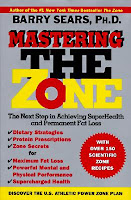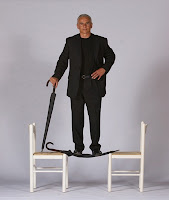The Gift of Fear vs. the Price of Worry & Ignorance
I recently finished reading The Gift of Fear, by Gavin de Becker. It is a powerful book about the survival signals that protect us from violence. I think everyone could benefit from reading this book, women especially so. I recognized many components within its pages that I teach in my Vancouver/Richmond BC women’s self-defense class.
Fear Itself
The Gift of Fear breaks down the process by which fear is generated and shows how it serves to warn us of danger. De Becker posits that fear is ignited by our subconscious mind, which is registering signals of danger that our conscious mind hasn’t seen or has dismissed through “logic.” I always teach women that when they experience real fear, the kind that makes the hairs on the back of your neck stand up, they should listen to their instincts and take action to get away from the person or remove themselves from the situation that is causing the reaction. But this experience of acute fear is very different from the kind that many women experience on a day-to-day basis, a general fear that violence could happen to them randomly. This is not “authentic” fear, according to de Becker, but is actually worry, a form of fear that is manufactured, and it actually debilitates a person’s ability to sense real danger. (more…)
Forget What You “Thought” You Knew about Aikido
 This week I started reading a book, Aikido Shugyo: Harmony in Confrontation, that my friend and mentor Robert Mustard Sensei gave me. Written by the founder of Yoshinkan Aikido, Gozo Shioda Kancho, it provides a personal and direct experience of the man as though he were telling us his stories right in front of us. Each story describes a different principle of Aikido. Some of the principles featured would surprise many a martial artists who “thinks” they know what Aikido is all about, including those listed below.
This week I started reading a book, Aikido Shugyo: Harmony in Confrontation, that my friend and mentor Robert Mustard Sensei gave me. Written by the founder of Yoshinkan Aikido, Gozo Shioda Kancho, it provides a personal and direct experience of the man as though he were telling us his stories right in front of us. Each story describes a different principle of Aikido. Some of the principles featured would surprise many a martial artists who “thinks” they know what Aikido is all about, including those listed below.
Celebrating My Dojo’s 5-Year Anniversary

A Personal Review of the Zone Diet
 Leading up to an important martial arts grading, I decided to try eating healthier. A martial artist friend of mine recommended the “Zone Diet”, featured in the book Barry Sears’ book, Mastering the Zone
Leading up to an important martial arts grading, I decided to try eating healthier. A martial artist friend of mine recommended the “Zone Diet”, featured in the book Barry Sears’ book, Mastering the Zone. It’s not so much of a diet specifically for weight loss and more a way of eating on an ongoing basis that helps you achieve peak performance physically and mentally.
Sears’ concept of “The Zone” changes the way you look at nutrition, weight loss and performance. It stresses getting more of your calories from fat and protein and fewer from carbohydrates, but it’s not about getting rid of carbs altogether. It’s about eating the right amount of protein relative the the amount of carbs you’re eating to maintain the right levels of insulin production in your body. (more…)
Book Review: Zen in the Martial Arts
 I recently picked up Zen In The Martial Arts
I recently picked up Zen In The Martial Arts, out of curiosity. Under the guidance of such celebrated masters as Ed Parker (the man who taught Elvis Presley) and the immortal Bruce Lee, Joe Hyams vividly recounts stories from more than 25 years of experience in the martial arts.
Hyams demonstrates to readers how the daily application of Zen principles not only developed his physical skills, but gave him the mental discipline to control his personal problems related to self-image, work pressure, competition, etc. I’ve read a number of martial arts philosophy books in addition to books entirely about Zen and I found that this book speaks strongly to martial arts students as an introduction to the topic. It communicates Zen concepts in an anecdotal fashion that would help students make sense of it all in the context of their training. (more…)
The Unbreakable Umbrella – A Review
 I was checking out various videos on YouTube of people using a cane for self-defense one day and I came across some product videos for the unbreakable umbrella. Watching their videos on YouTube, it does appear to be unbreakable. But it is possible to fake these things.
I was checking out various videos on YouTube of people using a cane for self-defense one day and I came across some product videos for the unbreakable umbrella. Watching their videos on YouTube, it does appear to be unbreakable. But it is possible to fake these things.
I contacted the company asking them about their product, telling them a little about who I am and what I do, and they offered to send me one of their umbrellas on the house provided that I review it on my blog. I gleefully accepted.
The umbrella, on first glance, looks just like any other cane umbrella. This explains why it is possible for people to bring it on an airplane without creating a stir. You can’t even bring a cane on an aircraft nowadays without being able to prove that you need it.
It is noticeably heavier than the average cane umbrella, but it makes up for it by being ultra-sturdy. It’s made of ABS, a man-made composite material, not that that means anything to the average person. I decided to take it in to my dojo and test it out. I didn’t have a watermelon to split open like on the YouTube vid, but I ran a couple of the other tests. Here’s the vid:
It is suitable for use in self-defense techniques in place of a cane. The wide hook handle allows you to easily hook someone around the neck or legs. And as long as you keep the nylon wrapped up, it makes for an effective striking weapon. The only trouble in paradise is the cost. It’s carries a hefty price tag: $179.95 US. But this may be worthwhile for self-defense enthusiasts who would like to be able to use an umbrella to defend themselves should the need arise. With the fall starting here in Vancouver, I can expect to be carrying my unbreakable umbrella with me right up until the end of next spring, so I’m very happy to own one.
Book Review: Fighting Science
 I was recently recommended a book called Fighting Science
I was recently recommended a book called Fighting Science by Martina Sprague. The premise behind the book sounded interesting and useful so I gave it a read.
Fighting Science teaches you what you need to know to successfully apply the laws of physics to your technique in the martial arts. As we all know, size and strength only take you so far, especially for someone my size.
In her book, Sprague gives a solid overview of strategic concepts that allow you to exploit your opponent’s weaknesses and maximize your strengths. She provides a detailed look at how things like momentum, rotational speed, friction, direction, impulse, and conservation of energy can work for or against you. (more…)


 We're proud to announce that Lori O'Connell Sensei's new book, When the Fight Goes to the Ground: Jiu-jitsu Strategies & Tactics for Self-Defense, published through international martial arts publisher Tuttle Publishing, is now available in major book stores and online. More about it & where to buy it.
We're proud to announce that Lori O'Connell Sensei's new book, When the Fight Goes to the Ground: Jiu-jitsu Strategies & Tactics for Self-Defense, published through international martial arts publisher Tuttle Publishing, is now available in major book stores and online. More about it & where to buy it.